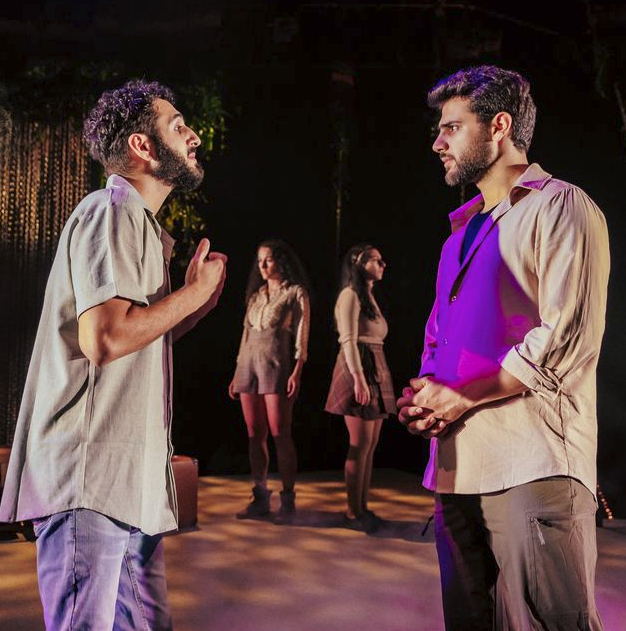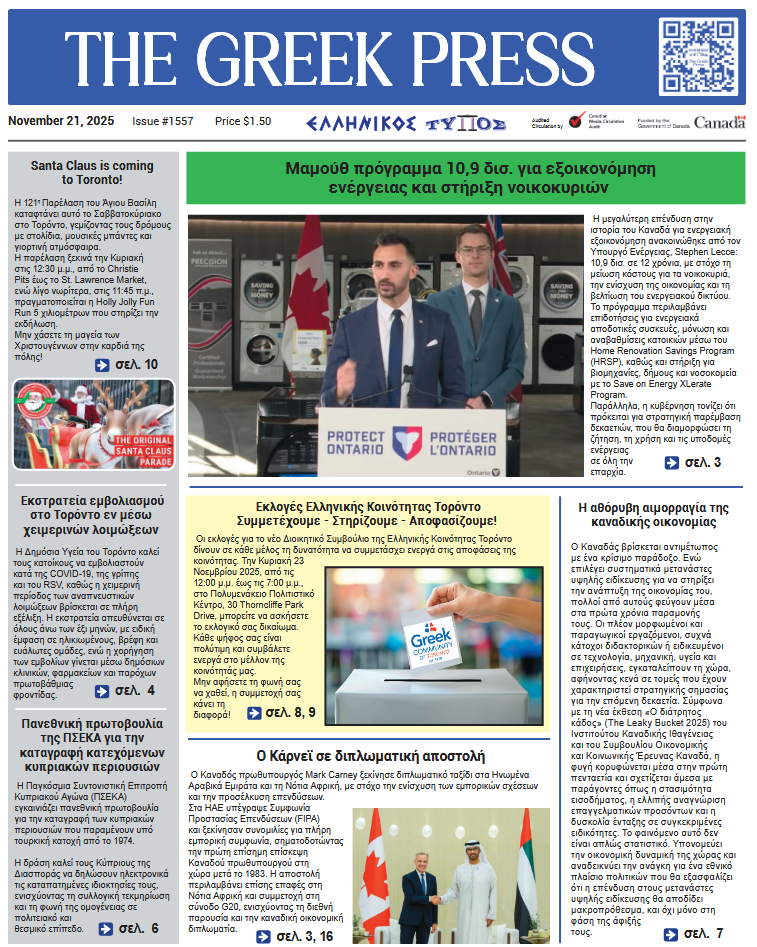 CLICK TO VIEW THE WHOLE PUBLICATION ONLINE
CLICK TO VIEW THE WHOLE PUBLICATION ONLINEThe Green Line is the title of of Makram Ayache’s play and refers to the demarcation of Beirut, Lebanon into East and and West Beirut during the Lebanese Civil War. The play switches to events that occurred in 1978 and 2018 quickly and seamlessly but not always clearly. It has five characters played by four actors in the two time periods.
In 1978 during the Civil War, we meet Mona (Zaynna Khalife) and Yara (Basma Baydoun), two young university students in Beirut who come from different social backgrounds. Mona comes from a well-off middle-class family while Yara was born in a tent and is a Palestinian refugee. But they are friends and are moving towards a love affair.
Naseem (Oshen Aoun) is Mona’s brother and he wants to find a way out of war-torn Beirut. He discovers that his parents have left him a plot of land in the mountains, a safe place for him and his sister to escape to. His sister resists the idea because she wants to finish her studies and because of her relationship with Yara.
In 2018, we meet Rami (Oshen Aoun), a Lebanese-Canadian, who has returned to Beirut to bury his father. On the day of his father’s funeral, he goes to a gay bar where he drinks too much and meets Fifi (Waseem Alzer), a colourful and exuberant drag queen. Fifi is the persona of Zidan. The two men are queer and a love relationship between them develops.
The play has naturalistic scenes and frequent visits to the theatre of the absurd including some some in the beyond. Near the beginning of the play, Naseem tells us that Rami spoke at his funeral in 2018. I take that to mean that Rami is Naseem’s son and Rami has solved the riddle of the photograph of Naseem’s apartment that the latter left in 1978 to go to his land in the mountains,
The Green Line has many virtues but clarity and lack of confusion are not two of them. The action moves between 1978 and 2018 quickly and a bit too easily. Pay attention. It is a play on gay themes during in a vicious civil war where death is always present and afterwards when people try to gather the pieces. For example, Yara describes the killing of her father and the disposal of his body in a mass grave. Her mother must dig his body with her bare hands so she can perform the necessary burial rituals.
Naseem is prepared to do anything to protect his sister and she is equally devoted to him. But when he discovers that she is in a lesbian relationship, he shoots Yara, her lover.
The play has lyrical and salty language as it tries to guide us through homosexual love and the horrors of civil war, death, fear and destruction. It is a tall order to fulfill and Ayache is not always successful.
In the program they give credit, quite rightly, to all the offstage artists and workers but they could not be bothered to tell us the parts played by the four actors. Well, they do stunning work with Aoun doing bravura acting as Naseem and Rami. Alzer plays the exuberant Fifi and the more down-to-earth Zidan. Khalife and Baydoun give sensitive performances as young lesbians caught in a society where it cannot be named.
The set by Anahita Dehbonnehie (who also did costumes) features a square playing area tilted towards the audience and an array of screens and items that combined with Jareth Li’s and Kit Norman’s lighting design and Chris Pereira’s and Heidi Chan’s sound design provide a complex background for the production. The production features surtitles in English and Arabic presumably to provide some clarity. It does not quite work.
Ayache directs his own play that with all its virtues could gain a great deal if it were less ambitious and had more clarity.
The Green Line by Makram Ayache in a production by In Arms Theatre Company and the Mena Collective in association with Buddies in Bad Times Theatre and Factory Theatre, continues until October 4, 2025, at Buddies in Bad Times Theatre, 12 Alexander Street, Toronto, Ontario. www.buddiesinbadtimes.com
Waseem Alzer, Basma Baydoun, Zaynna Khalife, and Oshen Aoun in The Green Line. Photo by Jeremy Mimnagh.






























